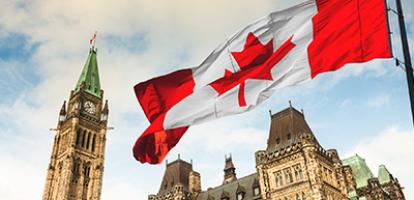Ottawa has set its sights on reining in predatory lending rates. Last year it set out draft regulations that would lower the rate non-prime lenders can charge from 48 to 35 per cent (“annual percentage rate” or APR). Will that keep people who are prey to predatory lending from entering a cycle of debt? Probably not.
There are two types of borrowers, prime and non-prime. Prime borrowers have strong credit scores that give banks and credit unions confidence they will pay their loans on time and in full. As a result, they can borrow at reasonable interest rates. Non-prime borrowers are more diverse. Some have a checkered repayment history. Others, including immigrants, have no Canadian credit history. Because banks and credit unions often won’t lend to them, they have to seek credit elsewhere. To offset the higher risks involved lenders in these alternative markets charge higher interest rates. Higher rates for riskier loans will strike most people as common sense.
Until last year’s budget, and with only a few exceptions, the most a lender could legally charge was 48 per cent. The decision to set a legal maximum interest rate suggests governments believe that a) rates can rise above and beyond what non-prime borrowers should face and b) only price regulation can fix it.
Has Ottawa made both cases?
The government did do a cost-benefit analysis of lowering the rate. It estimates that as a result of borrowers either searching for lower cost debt or delaying discretionary spending in the face of this new lower maximum interest rate, the present value of what consumers would save in loan fees over 11 years was $256.8 million. On the other hand, lenders would lose $238.5 million. The net benefit is therefore slightly more than $18 million over 11 years — less than $2 million annually. That’s the government’s estimate of the cost of the market failure it claims to have identified.
But its analysis focused only on payday lenders and borrowers. Plenty of non-prime borrowers go to alternative lenders who offer less extreme terms and conditions. The Canadian Lenders Association says that in fact about half the country’s eight million non-prime borrowers face interest rates above 35 per cent. If that becomes the legal maximum, they would be in danger of losing all access to credit. Four million seems high to me, but it’s a fair assumption the number of Canadians who will lose access is considerably more than the 93,000 the government’s cost-benefit analysis assumes.
The lenders’ position is that the interest rates being charged do not represent a market failure but are appropriate given the risk profiles of non-prime borrowers. A ceiling on rates would therefore wipe out the market for those borrowers. Research from other jurisdictions supports that view. A study of Illinois’ decision to cap rates at 36 per cent showed a big drop in the number of non-prime loans – almost double the corresponding increase in prime loans – and a reduction in the average amount lent to non-prime borrowers who did still receive a loan.
If Ottawa’s real goal is to go after payday lending, it could exempt non-payday alternative lenders, defined appropriately. If it wanted to do more, it could pursue policies to protect consumers and increase competition for non-prime borrowers, thus lessening the need for price regulation.
On consumer protection, it could do more to ensure that loan terms, including all fees, are as transparent as possible and are explained in simple language prospective borrowers understand. Clear, simple language about the interest rate, how it is calculated, and what happens if borrowers fail to repay on time would help weed out bad actors and drive down average rates.
On competition, Canada has lagged behind other countries in open banking, which among its many attributes, can more accurately assess credit scores, thus helping borrowers access more loans on more appropriate, affordable terms. Last fall’s federal economic statement committed the government to introducing open banking legislation in this year’s budget, with implementation in 2025. That will be a good step, if it’s taken.
Capping market prices should be a policy of very last resort. Better to focus on targeting the most egregious lenders and improving competition and consumer protection. What the government really shouldn’t do is make life even harder for people who are already having trouble accessing credit.
Jeremy Kronick is associate vice-president and director of the Centre on Financial and Monetary Policy at the C.D. Howe Institute.
Published in the Financial Post





